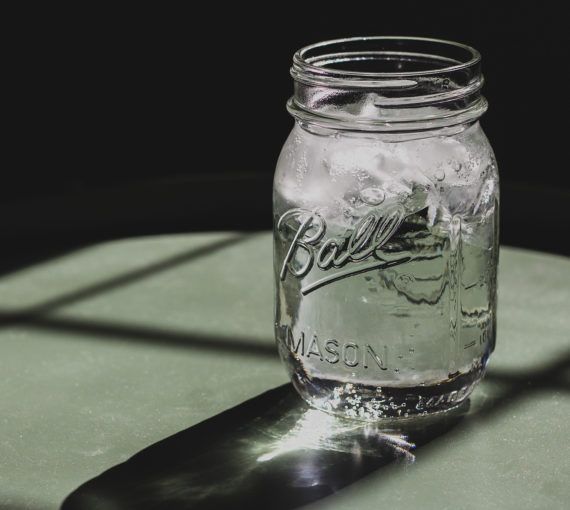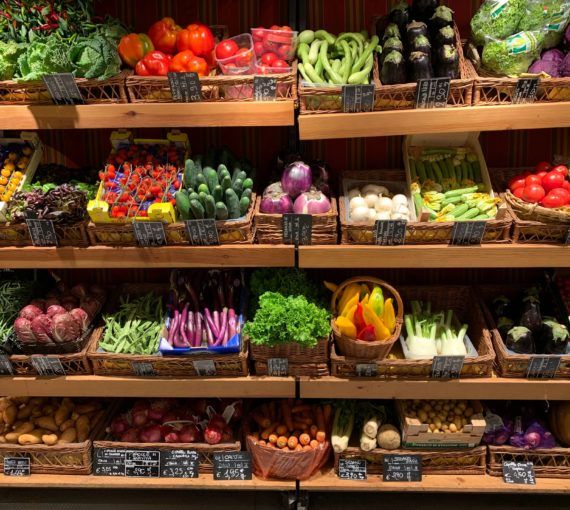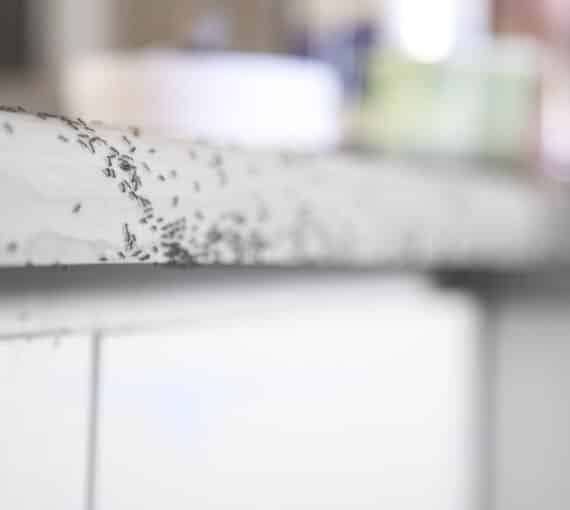
Something as simple as regular dusting or vacuuming can reduce your exposure to toxic substances. Studies show that dust is a chemical soup with low levels of flame retardants, phthalates, pesticides and metals like lead, mercury and arsenic.
The world is full of invisible threats: industrial byproducts, synthetic additives and other toxic pollutants. We inhale, ingest and absorb them through our skin daily. This is called “body burden.” Learning how to avoid these toxic chemicals can be as easy as A, B, C.
From endocrine disruption to respiratory issues, the adverse effects of unchecked body burden on human health are vast. And it’s not just a personal concern. It’s a collective issue that affects communities and ecosystems. Toxic chemicals introduced into the air, water and soil contribute to pollution, biodiversity loss and ecosystem degradation.
Adopt Earth-friendly habits and practices to reduce your body burden.
Follow these simple ABCs to unburden yourself, your family and your home
A is for antibacterial
“Antibacterial” products aren’t better at fighting germs than eco-friendly alternatives. In fact, ingredients such as triclosan may interfere with hormone function, contribute to antibiotic-resistant bacteria and harm wildlife.
- Make DIY germ-fighting body care products.
- Explore Earth-friendly dental care and make your own toothpaste.
- Disinfect your home with hydrogen peroxide. Unlike chlorine bleach, it breaks down into oxygen and water and is kind to the environment.
- Make your own cleaning products with castile soap and other Earth-friendly ingredients.
B is for body care
Many commercial, mass-produced body care products contain toxic chemicals and additives that harm human health and pollute the environment. Avoid phthalates, sodium laureth sulfate and petrolatum by reading labels carefully and/or making your own body care products.
- Make lip balm and deodorant.
- Make non-toxic body care recipes.
- Choose non-toxic nail polish.
- Get acquainted with the Dirty Dozen — twelve cosmetic chemicals to avoid.
C is for contaminants
Appliances, furniture and electronics shed toxics every day. Do you have a chronic cough, headaches, allergies or asthma? Your house could be making you sick! Mould, radon gas, volatile organic compounds, flame retardants, combustibles, plasticizers, pesticides and asbestos are some of the most common household pollutants and contaminants.
- Identify and limit your exposure to eight common household pollutants and contaminants.
D is for dust
Something as simple as regular dusting can reduce your exposure to toxic substances. Studies show that dust is a chemical soup with low levels of flame retardants, phthalates, pesticides and metals like lead, mercury and arsenic.
E is for eliminating fossil fuels
Getting fossil fuels out of your home is good for the climate and your health. If your furnace or stove burns oil or gas, it’s likely polluting your home with dangerous toxics that can cause many ailments, from respiratory issues to heart disease.
Always avoid idling your internal combustion engine vehicle — especially in the garage. Even when the door is open, poisonous carbon monoxide can accumulate and leak into your home.
- Get fossil fuels out of your home.
- Make the switch to an electric vehicle, or better yet, choose active or public transportation.

F is for filtration
Water filters can improve the taste, smell and appearance of drinking water and remove some chemicals like lead and pesticides. But it’s important to select a filtration system that suits your water conditions. To do that, you need to know the problem.
- Choose the best water filter for your needs.
G is green sex
Eco-minded sex is better for you and the planet! Most sex toys contain phthalates — chemicals used to make plastics more flexible and harder to break that can harm the environment and human bodies. Studies show phthalates can disrupt the body’s hormone-regulating endocrine system.
H is for hair dye
Some hair dye products contain ammonia, petrochemicals, sulfates, phthalates and P-phenylenediamine, which can cause cancer and may be contaminated with brain-toxic heavy metals.
- Choose safer hair dye products or don’t dye at all.
I is for indoor air quality
Maintain clean, toxic-free indoor air quality — important for safeguarding human health and wellbeing. Indoor air can contain a variety of pollutants, including VOCs, mould spores and particulate matter.
- Safeguard indoor air quality from pollution and wildfire smoke.
- Avoid manufactured deodorizers that contain “fragrance” and “parfum.” These can trigger allergies and asthma for individuals with environmental sensitives.
J is for “on the job”
Body burden happens everywhere. Find solutions wherever you have influence. Help avoid toxics where you work and/or study to protect colleagues, classmates, clientele and your wider community.
- Start a workplace green team.
- Start a school green team.
K is for knowledge
Knowledge is the foundation of empowered, informed choices that help create a healthier living environment. Understand the importance of reducing your body burden, discern harmful and safe ingredients and be aware of potential health and environmental impacts of products.

L is for laundry
Some commercially sold laundry detergents, fabric softeners and stain removers contain substances such as phthalates, fragrances and surfactants that harm human health and pollute the environment. Avoid formaldehyde by steering clear of wrinkle-resistant garments and non-iron fabrics. Always wash clothes before wearing.
- Adopt fabric care practices like wet cleaning that will protect you and the planet.
- Learn the environmental impacts, human health risks and ethical issues of synthetic dyes in fast fashion garments.
- Buy from thrift and consignment shops and/or host a clothing swap.
- Make your own laundry soap.
M is for microplastics
Plastics don’t decompose like organic substances. They break down into smaller and smaller pieces and eventually become tiny particles called “microplastics.” There’s still much to learn about microplastic’s health effects, but exposure in animals has been linked to liver and cell damage, infertility, inflammation, cancer and starvation.
N is for non-stick
Cookware with chemical non-stick coatings like Teflon are staples in many kitchens. Non-stick coatings contain toxic chemicals like PFOA and PTFE. When some non-stick coatings get scratched or damaged, they can release toxic fumes. These can harm humans and animals and contribute to air pollution.
O is for off-gassing
New furniture, mattresses and electronics can release harmful chemicals like VOCs into the air. VOCs can cause eye, nose and throat irritation, headaches, nausea, damage to the kidneys, liver and central nervous system and — depending on the chemical — cancer. Put new furniture in a well-ventilated area before bringing it into your living space.
- Learn how to limit your exposure to VOCs.
- Recycle your electronics properly.
P is for pesticides
Pesticides enter homes in many ways. The serious long-term adverse effects of pesticide exposure have been called a “silent pandemic.” Evidence shows a causal relationship between pesticide exposure and Parkinson’s Disease and an increased risk of fetuses and children developing autism. Prolonged exposure to volatile pesticide particles can also cause headaches, irritation, allergies, fetal harm, hormone disruption and immune system weakening.
- Eat organic produce as much as possible.
- Keep pets clean. They can bring in dust, dirt and allergens.
- Avoid lawn and garden chemicals. (See X is for xeriscaping)

Q is for quality
From affordability to accessibility, many barriers keep people from choosing quality food and drink. You can still make a difference by making small choices that favour quality. Choosing less-processed food and drink can limit your exposure to artificial additives, preservatives, antibiotics, BPA and more. Studies show that consuming foods and beverages made with organic ingredients can also help reduce exposure to harmful toxics and chemicals (see P is for pesticides).
- Eat organic produce as much as possible.
- Cook from scratch when you can.
- Try growing your own food.
- Learn the difference between organic, local and carbon-neutral beer.
- Find out what salmon to eat and avoid.
- Discover the difference between organic, biodynamic, natural and vegan wine.
- Get the scoop on organic vodka.
- Choose eggs from happy chickens.
R is for reading labels
Being informed about ingredients in items you use daily can reduce exposure to harmful substances and toxic chemicals. Reading labels is a great place to start. If you’re unsure of an ingredient, look it up!
- Learn the importance of reading food labels.
- Discover 12 harmful chemicals commonly found in beauty care products (the Dirty Dozen).
S is for sunscreen
Some ingredients found in chemical sunscreens — parabens, oxybenzone, octinoxate and retinyl palminate — are killing coral reefs worldwide and posing risks to human health.
T is for toilet paper
Toilet paper contains perfluoroalkyl and polyfluoroalkyl substances, or PFAS — often referred to as “forever chemicals” because they don’t break down easily. Because they resist water, stains and heat, PFAS are used in a range of industrial, commercial and personal health products. They’re linked to significant health problems, such as cancer, and can harm human reproductive, immune and cognitive functions.
U is for unclog
Many drain cleaning products contain sodium hydroxide (lye and caustic soda). It’s highly corrosive and can burn eyes, skin and lungs. Long-term exposure may lead to ulceration of the nasal passages and chronic skin irritation.

V is for versatility
Many commercial cleaning products contain toxic chemicals that are linked to cancer, reproductive disorders, asthma and severe allergies. Canada does not require warnings about chronic health and environmental hazards from chemicals in cleaning products. Discover the versatility of Earth-friendly and DIY cleaning.
- Disinfect with vinegar.
- Shop for green cleaners.
- Get familiar with environmentally friendly ingredients for DIY cleaning recipes.
- Find out why you should go borax-free.
- Use castile soap in 13 ways.
- Make all-purpose cleaners, glass and mirror cleaner, furniture polish, stainless steel cleaner and fruit and vegetable wash.
W is for waste
Household hazardous waste can be found in the kitchen, bathroom or laundry room, and storage areas like the garden shed, garage, basement and attic. Many common household products contain hazardous chemicals. Once released, they can contaminate your body, home and the environment.
X is for xeriscaping
Xeriscaping (water-wise gardening) or landscaping with native plants better adapted to your area uses up to 50 per cent less water and eliminates the need for pesticides.
- Convert your lawn with nine alternatives that will support pollinators and reduce your exposure to chemicals in commercial gardening products.
Y is for yuck!
Got unwelcome “pests” in your space? Before you reach for a commercial pest removal product, consider its impact. Commercial pest removal often involves harmful pesticides. Synthetic chemicals designed to kill or repel “pests” can be toxic to the target and to beneficial insects, pollinators, birds and other wildlife, as well as domestic animals and pets. They can also contaminate soil, water and air, posing risks to ecosystems and human health.
- Discover nature-inspired, eco-friendly methods to deal with eight common “pests.”
- Learn how to kill bed bugs without toxic pesticides.
- Ditch DEET. Prevent and treat mosquito bites with non-toxic methods.
Z is for zzzs
The average person spends a significant portion of life sleeping. So maintaining a bed free of harmful chemicals is crucial for quality rest and health. Many pillows and mattresses are made from synthetic materials like petroleum-based polyester or polyurethane foam. Prolonged exposure to these chemicals can cause respiratory issues, skin irritation and hormonal disruptions.



